Find A Professional
More Items From Ergsy search
-
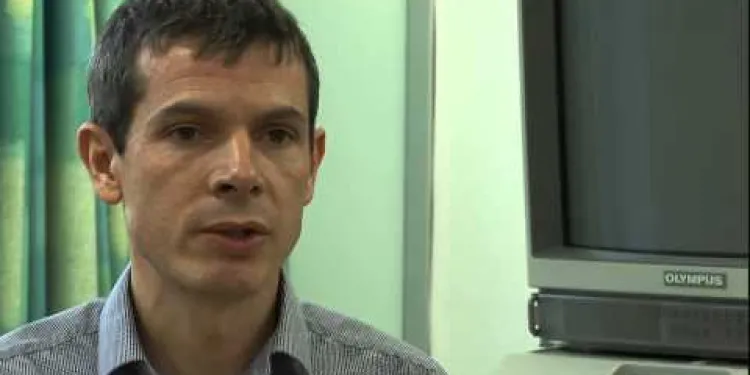
Bowel cancer - Symptoms and signs to look out for
Relevance: 100%
-
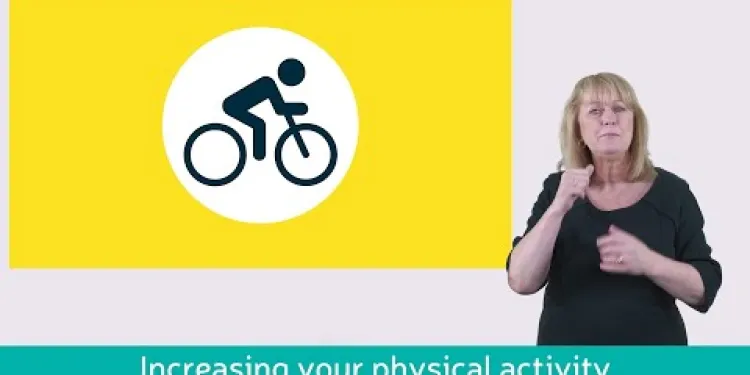
Learn about bowel cancer (British Sign Language version)
Relevance: 79%
-

Bowel cancer screening: Alan Titchmarsh and Tommy Walsh | NHS
Relevance: 71%
-
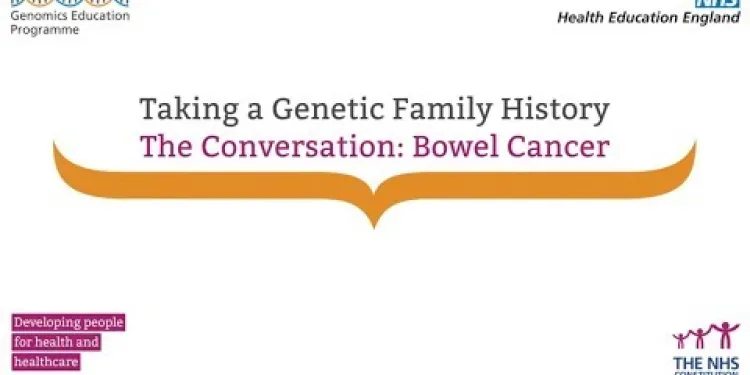
Taking a Genetic Family History - The Conversation (Bowel Cancer)
Relevance: 67%
-
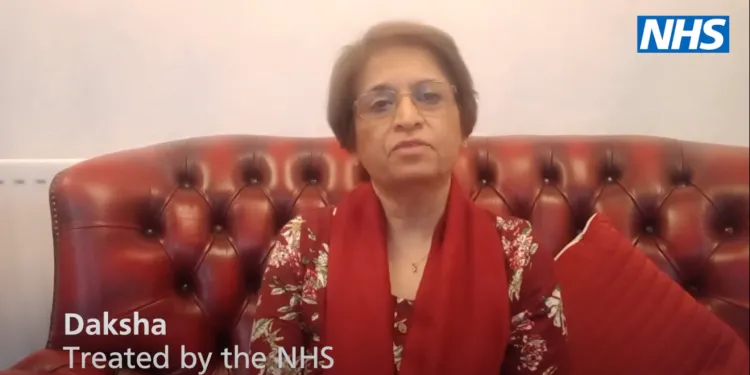
What is Cancer?
Relevance: 57%
-
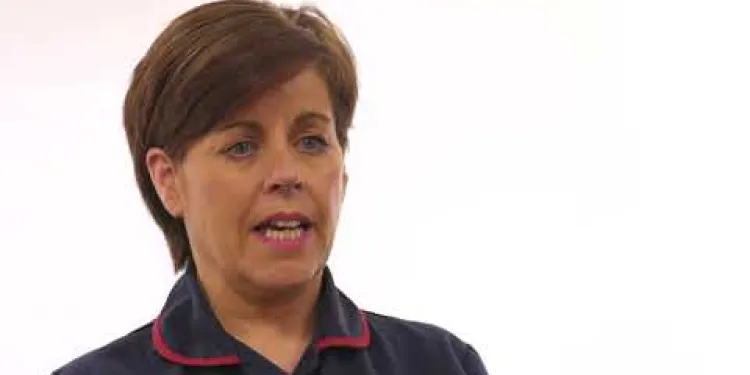
Ovarian Cancer
Relevance: 56%
-

Endometrial Cancer
Relevance: 55%
-

Treating prostate cancer
Relevance: 54%
-

Don't carry the worry of cancer with you | NHS
Relevance: 53%
-

Breast cancer: testing and treatment | NHS
Relevance: 52%
-

Worried about signs that could be cancer? Contact your GP practice | NHS
Relevance: 52%
-

Why do men get prostate cancer?
Relevance: 51%
-
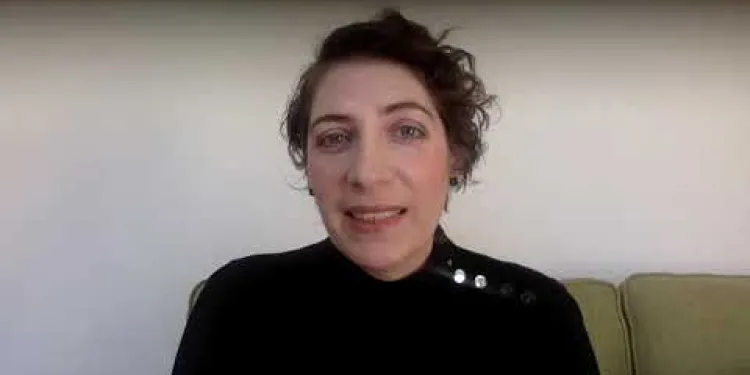
World Pancreatic Cancer Day - No Time to Wait
Relevance: 51%
-

Prostate cancer symptoms - detecting them early
Relevance: 50%
-

Having radiotherapy for breast cancer - 3 Videos
Relevance: 50%
-
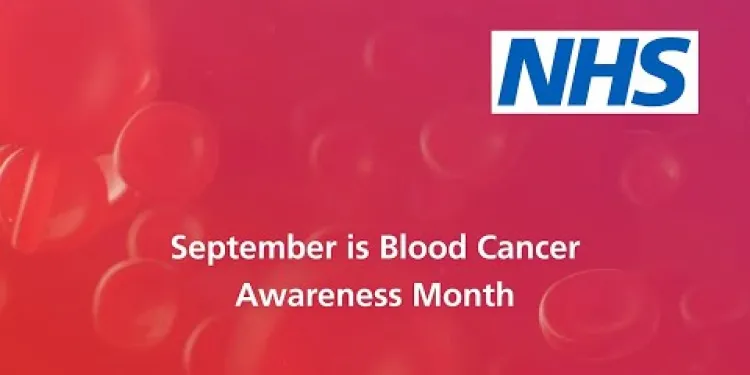
4 facts about blood cancer that you should know | NHS
Relevance: 48%
-

Skin cancer education
Relevance: 47%
-

What is Radiotherapy, and its use in treatment for cancers?
Relevance: 46%
-

Prostate cancer diagnosis and tests
Relevance: 46%
-
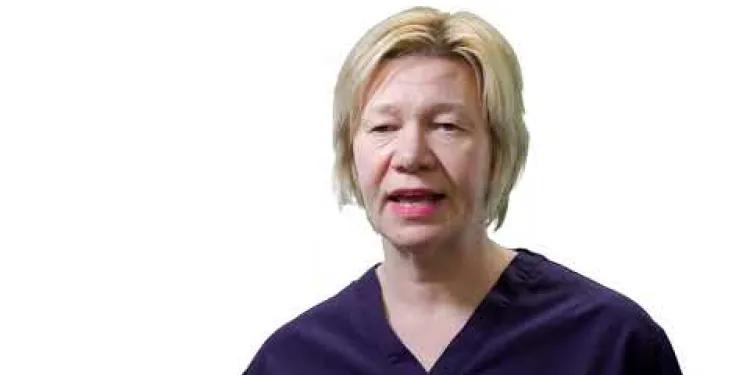
Head and Neck Cancer Diagnosis
Relevance: 45%
-

What is Prostate Cancer?
Relevance: 45%
-

Genomics I: An overview of genomics in cancer care
Relevance: 44%
-

Vaginal Cancer
Relevance: 43%
-

Ovarian cancer - signs and symptoms to look out for
Relevance: 41%
-

Mouth Cancer Awareness
Relevance: 41%
-

Getting to know your Testicles: Testicular Cancer Awareness with Dr James Howarth, Spilsby Surgery
Relevance: 41%
-

Living with prostate cancer
Relevance: 40%
-
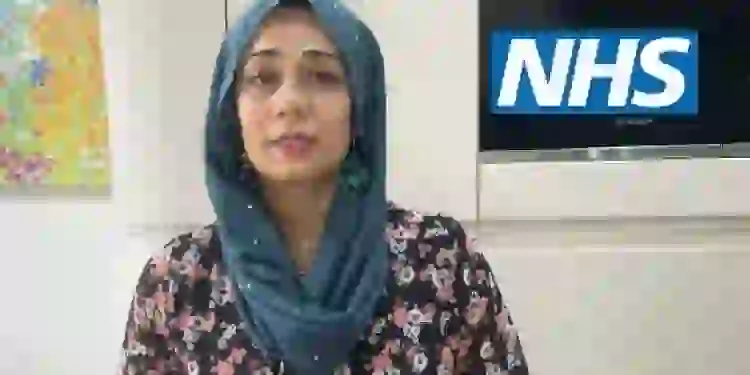
Get cancer symptoms checked by your GP | NHS
Relevance: 40%
-

About Breast cancer - signs and symptoms | NHS
Relevance: 39%
-

Skin Cancer - How do I check if my mole is skin cancer? | NHS
Relevance: 39%
-
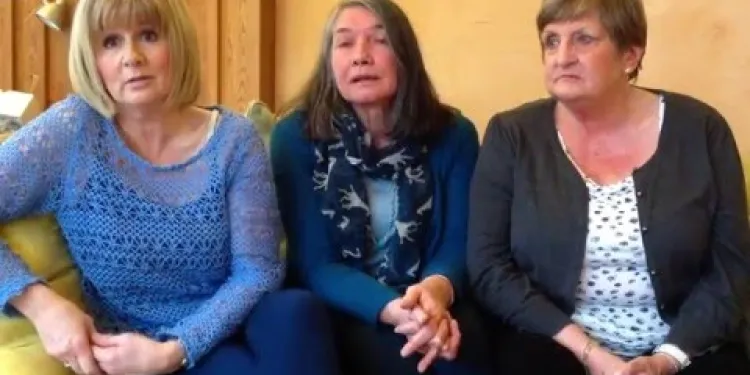
Raising awareness of ovarian cancer
Relevance: 39%
-
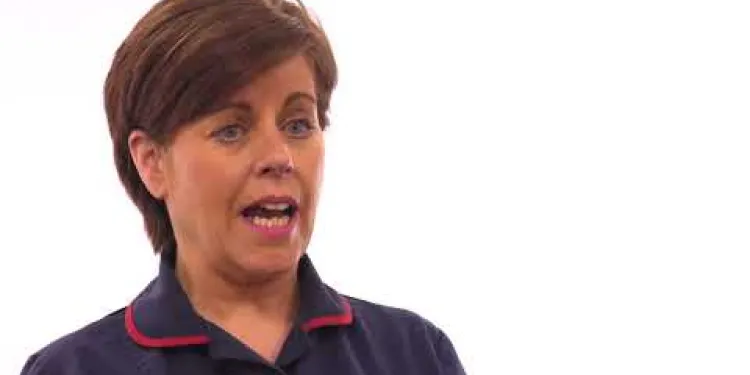
Endometrial Cancer
Relevance: 38%
-
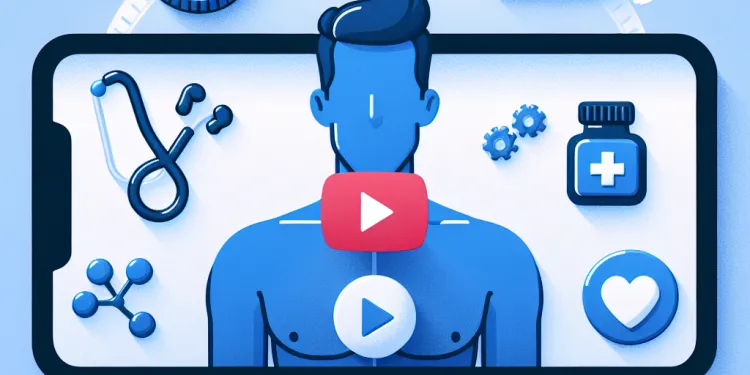
Am I more at risk of prostate cancer?
Relevance: 37%
-

How to use the bowel cancer screening FIT kit | NHS
Relevance: 37%
-
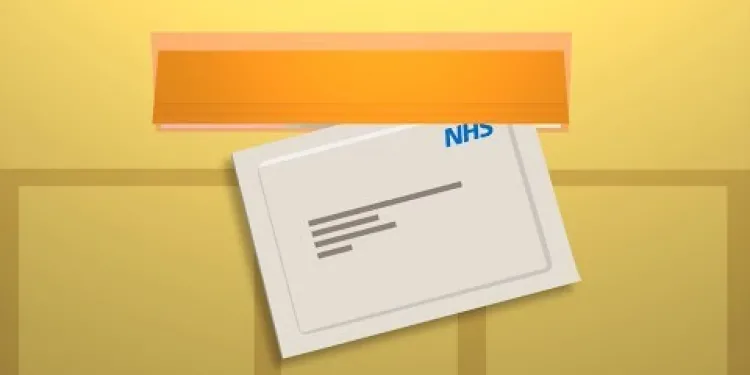
How to do the FIT bowel cancer screening test | Cancer Research UK
Relevance: 35%
-
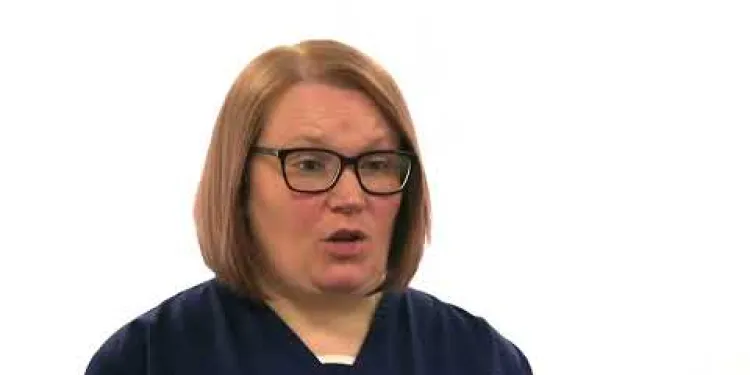
Vulval Cancer
Relevance: 35%
-
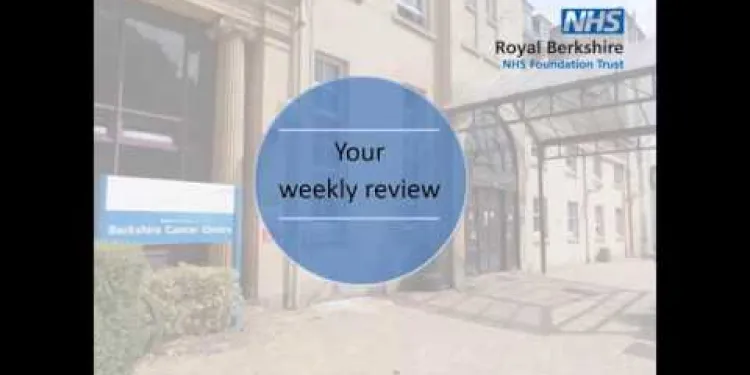
Royal Berkshire NHS Foundation Trust: Radiotherapy for prostate cancer
Relevance: 32%
-

NHS breast cancer screening
Relevance: 31%
-
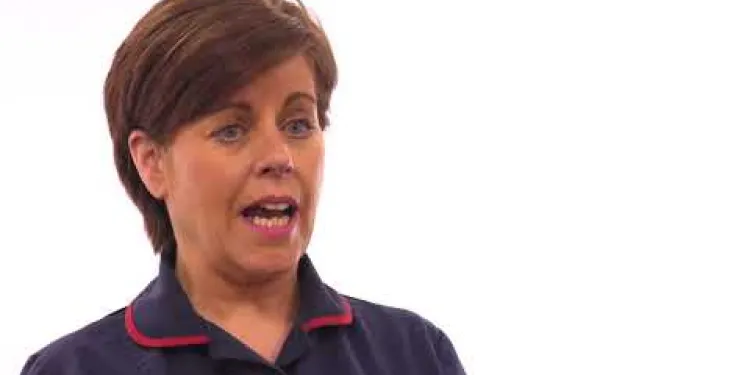
Endometrial Cancer
Relevance: 31%
-
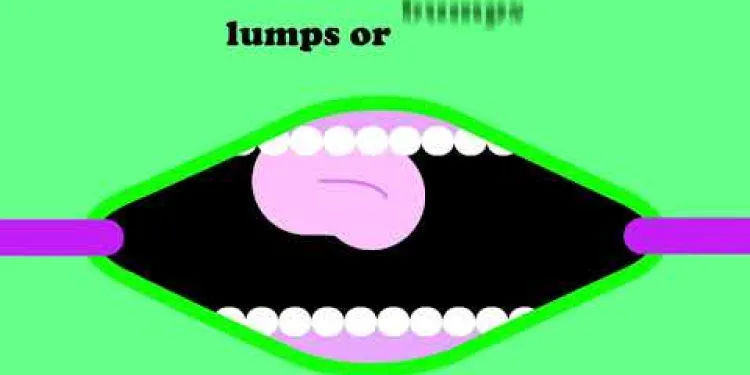
Mouth Cancer Infomercial
Relevance: 31%
Mohammad's Story
Early Life and Background
Mohammad, the founder of Islam, was born in 570 CE in the city of Mecca, in present-day Saudi Arabia. Orphaned at a young age, he was raised by his grandfather and later his uncle. Despite these early hardships, Mohammad's honesty and integrity earned him the nickname "Al-Amin" (the trustworthy) among his peers.
The Revelation
At the age of 40, Mohammad began receiving revelations from Allah (God) through the archangel Gabriel. These messages, which continued for 23 years, form the Quran, the holy book of Islam. Mohammad's teachings initially faced strong opposition from the tribal leaders of Mecca, who saw his monotheistic message as a threat to their power and the lucrative pilgrimage trade.
Migration to Medina
Due to escalating persecution, Mohammad and his followers migrated to Medina in 622 CE in an event known as the Hijrah. This migration marked the beginning of the Islamic calendar. In Medina, Mohammad established a cohesive Muslim community and began to gain political and military strength.
Establishing Islam
Over the next decade, Mohammad led the Muslim community through a series of conflicts with the Meccan tribes. His leadership skills and strategic acumen led to several significant victories, including the Treaty of Hudaybiyyah and the eventual peaceful conquest of Mecca in 630 CE. Upon returning to Mecca, Mohammad cleansed the Kaaba of idols, solidifying the city's status as the holiest site in Islam.
Legacy and Death
Mohammad passed away in 632 CE, leaving behind a rapidly growing Islamic state. His teachings and the Quran continue to shape the lives of over a billion Muslims worldwide. Mohammad is respected for his roles as a prophet, statesman, and reformer, and his life continues to be a subject of study and admiration for both followers of Islam and scholars of religion and history.
Mohammad's Story
Early Life and Background
Mohammad started Islam. He was born a long time ago in a place called Mecca, which is in Saudi Arabia today. When he was young, Mohammad lost his parents. His grandfather and uncle took care of him. Even though it was hard, Mohammad was very honest, so people called him "Al-Amin," which means trustworthy.
The Revelation
When Mohammad was 40 years old, he began hearing messages from Allah (God) sent by an angel named Gabriel. These messages formed the Quran, which is Islam’s holy book. Some people in Mecca didn’t like what Mohammad taught because it was different from what they believed, and they were worried about losing their power.
Migration to Medina
Because of the problems in Mecca, Mohammad and his followers moved to a new city called Medina. This move is called the Hijrah and started the Islamic calendar. In Medina, Mohammad created a strong Muslim community and got more power.
Establishing Islam
For the next 10 years, Mohammad led his followers in different battles with the tribes from Mecca. He was a good leader and won many important victories. One big event was when he returned to Mecca and made it the most important place in Islam by cleaning out the idols from the Kaaba.
Legacy and Death
Mohammad died in 632 CE. By then, Islam was growing fast. Today, over a billion Muslims around the world follow his teachings and the Quran. Mohammad is remembered as a prophet and a great leader. Many people still learn about his life.
Frequently Asked Questions
Who is the main character in Mohammad's story?
The main character in Mohammad's story is Mohammad himself.
What is the setting of Mohammad's story?
The story is set in a small town in the United Kingdom.
What motivates Mohammad in his journey?
Mohammad is motivated by his desire to achieve a personal goal and overcome obstacles.
Does Mohammad face any challenges in the story?
Yes, Mohammad faces multiple challenges, including personal setbacks and external obstacles.
How does the story begin?
The story begins with Mohammad experiencing a significant life event that sets him on his journey.
What theme is central to Mohammad's story?
A central theme of the story is perseverance and resilience in the face of challenges.
Are there any supporting characters in the story?
Yes, there are several supporting characters who play pivotal roles in Mohammad's journey.
Is the story based on real events?
The story is partly inspired by real events but also includes fictional elements.
What genre does Mohammad's story belong to?
Mohammad's story falls under the genre of contemporary fiction.
Does the story have a happy ending?
The ending of the story is bittersweet, offering a mix of resolution and open-endedness.
What lessons can be learned from Mohammad's story?
Readers can learn about the importance of determination, hope, and the value of support from others.
Is Mohammad's story appropriate for young readers?
The story is generally suitable for young adults and older readers due to its mature themes.
How does Mohammad's story reflect British culture?
The story reflects British culture through its setting, character interactions, and societal themes.
Are there any symbolic elements in the story?
Yes, the story includes symbolic elements that represent Mohammad’s inner struggles and growth.
Is there a sequel to Mohammad's story?
As of now, there is no sequel, but the story's ending leaves room for potential future developments.
Who is the most important person in Mohammad's story?
This is asking about the person who the story is mostly about.
Here are some tips to help understand stories:
- Look for names that are mentioned a lot.
- Think about who is doing the most important things.
- Try using pictures or drawing to help remember.
The story is about a boy named Mohammad. Mohammad is the most important person in the story.
Where does Mohammad's story happen?
The story happens in a small town in the UK. The UK is a place made up of 4 countries. If reading is hard, try using audiobooks or reading with a friend. It can make stories more fun and easy to understand.
Why does Mohammad want to go on his journey?
Mohammad really wants to reach his own goal. He is trying hard to beat the things that make it tough.
Does Mohammad have any problems in the story?
Yes, Mohammad has many problems. He has things that go wrong in his life and other problems that come from outside.
How does the story start?
The story begins at the start. Think about who is in the story and where they are. You can use pictures or ask someone to read it with you to help understand.
The story starts when something big happens to Mohammad. This changes his life and starts his adventure.
What is the main idea of Mohammad's story?
The story is about never giving up, even when things are hard.
Who else is part of the story?
Can you think of any other characters who help or are friends with the main character? Try using characters’ pictures or action figurines to help you remember them.
Yes, there are other characters who help Mohammad a lot in his journey.
Is the story about something that really happened?
This story is made up of two things. Some parts are true because they happened in real life. But other parts are made up and did not really happen.
What type of story is Mohammad's?
Look at Mohammad's story. Think about what kind of story it is. Is it funny, a mystery, or maybe about magic? To help, you can ask someone or use a book to understand different story types.
Mohammad's story is a make-believe tale that takes place in our world today.
Does the story end happily?
Does the story finish with everyone happy and safe?
Here are some things you can do to understand the story better:
- Ask someone to read the story with you.
- Look at pictures in the book to help you understand.
- Talk about the story with a friend or family member.
The end of the story is happy and sad. Some things are solved, but some are left open.
What can we learn from Mohammad's story?
Here, we want to find out what Mohammad's story can teach us.
- Think about what happened to Mohammad.
- What did he do that was good or brave?
- Did he make any mistakes we can learn from?
To make it easier, you can:
- Use pictures to help understand the story.
- Talk about the story with a friend or family member.
- Write down what you think the story teaches us.
Readers can learn why it is important to keep trying, to have hope, and to have help from friends and family.
Is Mohammad's story ok for kids to read?
The story is best for older kids and grown-ups. It talks about things for older people.
What does Mohammad's story tell us about life in Britain?
The story shows what life is like in Britain. It does this by talking about where it happens, how people talk to each other, and the big ideas in the story.
Some tools that can help you understand better are: reading with a friend, using audiobooks, or drawing pictures of the story. You can also ask someone to explain hard words.
Are there any symbols in the story?
A symbol is a picture, object, or thing that stands for something else.
If you need help, try using audiobooks or apps that read text out loud.
Yes, the story has special symbols. These symbols show how Mohammad is feeling inside and how he is growing.
Does Mohammad's story have a second part?
Right now, there is no next part of the story. But the way it ends might mean there could be more in the future.
Useful Links
Useful links from: Bowel cancer - Symptoms and signs to look out for
- NHS - Bowel Cancer This page from the NHS provides comprehensive information on bowel cancer, including symptoms, causes, diagnosis, treatment, and prevention.
- Cancer Research UK - Bowel Cancer Symptoms Cancer Research UK's page on bowel cancer symptoms details the various signs and symptoms to look out for, as well as information on early detection and when to see a doctor.
- Bowel Cancer UK - Symptoms Bowel Cancer UK's overview of symptoms provides important insights into the early warning signs of bowel cancer, along with advice on when to seek medical advice.
- Macmillan Cancer Support - Bowel Cancer Symptoms Macmillan Cancer Support offers a detailed guide on the symptoms of bowel cancer, emphasizing how to recognize the signs and understanding the importance of early diagnosis.
Useful links from: Bowel Cancer
- NHS North East London - Barbara’s Story Barbara’s Story is an educational resource used by NHS North East London to promote awareness about the experiences of vulnerable patients, particularly those with dementia, in healthcare settings.
- Alzheimer's Society UK - Barbara's Story in Dementia Education The Alzheimer’s Society uses Barbara’s Story as a key training tool to enhance understanding and empathy towards people with dementia, ensuring their voices and needs are better heard in medical care.
- Age UK - Barbara's Story: Enhancing Patient Experience Age UK includes Barbara's Story as part of its training resources, aimed at improving the quality of care for elderly patients, with a special focus on those suffering from cognitive impairments.
- Dementia UK - Learning Through the Lens of Barbara’s Story Dementia UK provides Barbara’s Story as a training video to healthcare professionals, to help develop a more empathetic understanding of the challenges faced by people living with dementia.
Useful links from: Taking a Genetic Family History - The Conversation (Bowel Cancer)
- NHS - Family History of Bowel Cancer This NHS page provides information on the causes of bowel cancer, including genetic factors and family history. It offers insights into hereditary risks and screening recommendations.
- Cancer Research UK - Bowel Cancer and Family History Cancer Research UK highlights the different risk factors for bowel cancer, focusing on genetic predispositions and the importance of family history in understanding individual risk levels.
- Bowel Cancer UK - Genetic Conditions Bowel Cancer UK provides detailed information on genetic conditions associated with a higher risk of developing bowel cancer. It offers resources for those with a family history and advice on genetic testing.
- Macmillan Cancer Support - Bowel Cancer Risk Factors Macmillan Cancer Support discusses the various risk factors for bowel cancer, with a focus on how family history and genetics can influence an individual's risk and the importance of early detection.
Useful links from: Bowel Cancer
- NHS - Mental Health Services Information about the mental health services provided by the NHS, including how to access them and what support is available.
- Mind - Mental Health Charity A UK-based charity offering advice and support to anyone experiencing a mental health problem.
- Rethink Mental Illness A charity that supports people who are affected by mental illness through advocacy, advice, and information.
- Samaritans - Providing Emotional Support A UK charity offering emotional support 24/7 to anyone who is dealing with distress or mental health issues.
Useful links from: Bowel Cancer
- National Health Service (NHS) The NHS website provides information and advice on a wide range of health and care topics. You can find NHS services, check your symptoms, find out about treatments, and read health news and articles.
- Mind UK Mind is a mental health charity offering advice and support to anyone experiencing a mental health problem. They provide a range of resources including information on mental health conditions, where to get help, and ways to support others.
- Samaritans Samaritans is a charity dedicated to reducing feelings of isolation and disconnection that can lead to suicide. They offer 24/7 support to anyone in need, through a helpline, email, or face-to-face services.
- Rethink Mental Illness Rethink Mental Illness is a charity that aims to improve the lives of people severely affected by mental illness through local groups, expert advice, information, and campaigning for policy change.
Useful links from: Bowel Cancer
- NHS - Mental health and wellbeing The NHS provides a comprehensive guide on mental health conditions, including information on symptoms, treatments, and how to get help.
- Mind - For better mental health Mind is a UK-based charity offering advice and support to empower anyone experiencing a mental health problem. They campaign to improve services, raise awareness, and promote understanding.
- Rethink Mental Illness Rethink Mental Illness provides support and information for people affected by mental illness. They offer services and support groups, as well as campaigning for better mental health services.
- YoungMinds YoungMinds is a charity dedicated to children and young people's mental health. They offer resources for young people, parents, and professionals, and campaign for better mental health support.
Useful links from: Bowel Cancer
- NHS - Cervical Screening Information on cervical screening, who should have it, and how it is done from the National Health Service.
- Jo's Cervical Cancer Trust UK charity dedicated to women affected by cervical cancer and cervical abnormalities, offering support and information.
- NHS - Cancer Comprehensive resource about cancer, including types, symptoms, diagnosis, and treatments from the NHS.
- Macmillan Cancer Support A leading UK charity providing support to cancer patients and their families throughout diagnosis, treatment, and beyond.
Useful links from: Bowel Cancer
- NHS - Living with a Stoma Provides comprehensive guidance on living with a stoma, including practical advice on changing and caring for a stoma bag.
- Colostomy UK - Changing Your Stoma Bag Offers a detailed PDF guide on how to change your stoma bag, courtesy of Colostomy UK, a dedicated UK-based charity.
- Bladder & Bowel Community - Ostomy Guide Provides an extensive ostomy guide, including step-by-step instructions for changing a stoma bag, from a UK-based community support organization.
- NHS - Stoma Care Offers essential tips and best practices for stoma care, including advice and instructional videos on changing a stoma bag.
Useful links from: Bowel Cancer
- NHS - People Who Can Help This NHS page offers a list of mental health helplines and services for urgent support in the UK, which may be beneficial for individuals facing similar challenges as Wynne.
- Mind - For Better Mental Health Mind is a UK-based charity providing advice and support to empower anyone experiencing a mental health problem. They campaign to improve services, raise awareness and promote understanding.
- Rethink Mental Illness Rethink Mental Illness provides expert advice and information to everyone affected by mental health problems. They offer extensive resources that can help individuals like Wynne cope with their conditions.
- Samaritans - Emotional Support Samaritans is a charity that provides confidential emotional support to those experiencing distress or despair. Their services could be a vital resource for anyone in need of urgent emotional assistance.
Useful links from: Bowel Cancer
- NHS - Mental Health and Wellbeing The NHS provides comprehensive information and support for mental health and wellbeing, including symptoms, treatments, and advice on managing stress, anxiety, and depression.
- Mind - Mental Health Charity Mind is a UK-based charity that offers advice and support to empower anyone experiencing a mental health problem. They also campaign to improve services, raise awareness, and promote understanding.
- Rethink Mental Illness Rethink Mental Illness is a charity that provides expert, accredited advice and information to everyone affected by mental health issues. They offer a wide range of support services, including helplines, support groups, and resources.
- Samaritans Samaritans is a UK charity that offers emotional support to anyone in distress, struggling to cope, or at risk of suicide. Their helpline is available 24/7 to provide confidential support.
Useful links from: Bowel Cancer
- NHS Mental Health and Wellbeing Comprehensive resource for mental health and wellbeing, providing information on conditions, treatments, and where to get help.
- Mind - For Better Mental Health UK charity offering information and support for people experiencing mental health problems. Provides advice, helplines, and local services.
- Samaritans A UK charity dedicated to reducing feelings of isolation and disconnection that can lead to suicide. Offers 24/7 support through their hotline.
- Rethink Mental Illness Provides information, services, and a strong voice for everyone affected by mental illness, challenging attitudes, and changing lives.
Useful links from: Bowel Cancer
- NHS: Mental health services - Where to get urgent help for mental health Provides information on how to get urgent help for mental health problems, including contact details and what to do in a mental health crisis.
- Mind: Paul's Story A personal account of Paul's experiences with mental health challenges, offering insights and hope for others facing similar issues.
- Samaritans: How we can help Offers emotional support to anyone in distress or struggling to cope, 24 hours a day, 365 days a year.
- Rethink Mental Illness: Our personal experiences Contains personal accounts from individuals living with mental illness, aiming to raise awareness and reduce stigma.
Useful links from: Bowel Cancer
- NHS - Mental Health Information and support for mental health issues provided by the NHS, including resources for managing conditions and accessing services.
- Mind Mind is a UK-based charity that offers advice and support to empower anyone experiencing a mental health problem. It also campaigns to improve services, raise awareness, and promote understanding.
- Rethink Mental Illness Rethink Mental Illness helps millions of people affected by mental illness by providing expert, accredited advice and information, tailored support, and campaigning for change.
- Samaritans Samaritans provides emotional support to anyone in emotional distress, struggling to cope, or at risk of suicide throughout the United Kingdom and Ireland.
Useful links from: Bowel Cancer
- NHS - Mental Health and Wellbeing Official NHS resource for mental health, including a range of support services, self-help guides, and advice on managing mental wellbeing.
- Mind - Mental Health Charity Leading UK mental health charity offering information, advice, and resources to help those experiencing mental health issues. Provides support groups and an extensive library of information.
- Rethink Mental Illness Provides expert, accredited advice and information to everyone affected by mental health problems. Focuses on severe mental illnesses and offers support, services, and advice.
- Samaritans A confidential emotional support service for anyone in the UK and Ireland. Available 24/7 through various means including phone, email, and face-to-face.
Useful links from: Danny's Story
- NHS - Danny's Story Learn about Danny’s Story on the NHS website, which highlights the journey and experiences of individuals with autism.
- National Autistic Society - Real Stories Explore Danny’s story on the National Autistic Society’s website, focusing on real-life accounts of people on the autism spectrum.
- Mind - Stories and Experiences Read about Danny’s experience with mental health on the Mind charity website, offering support and insights for those affected.
- YoungMinds - Mental Health Stories Find Danny’s story on the YoungMinds website, which shares the personal journeys of young people dealing with mental health challenges.
Useful links from: Bowel Cancer
- NHS - Barbara's Story An overview of Barbara's Story, which is an initiative aimed at educating healthcare professionals on the effects of dementia through a series of video narratives.
- Alzheimer's Society - Barbara’s Story and Dementia Training Information provided by the Alzheimer's Society on Barbara's Story, including its use in dementia training to improve understanding and empathy among healthcare staff.
- King’s Health Partners - Barbara's Story King’s Health Partners' page on Barbara's Story, detailing its significance and the impact it has had on dementia care and training within the NHS.
- Dementia UK - Barbara’s Story Dementia UK’s resources on Barbara's Story, exploring how the narrative approach is used to enhance the care of people with dementia and support their families.
Useful links from: Dr Philippa Kaye's story
- NHS - Health A-Z Comprehensive guide to conditions, symptoms, and treatments provided by the NHS.
- Macmillan Cancer Support UK charity offering support and information to those affected by cancer.
- Cancer Research UK UK-based cancer research and awareness charity, providing detailed information on cancer types, symptoms, and treatments.
- Mind UK Leading mental health charity in the UK providing advice and support to empower anyone experiencing a mental health problem.
Useful links from: Bowel cancer screening: Alan Titchmarsh and Tommy Walsh | NHS
- NHS - Bowel Cancer Screening Detailed information on bowel cancer screening provided by the NHS, including the screening process, eligibility, and benefits.
- NHS - Bowel cancer screening: Alan Titchmarsh and Tommy Walsh Specific information on bowel cancer screening campaigns featuring Alan Titchmarsh and Tommy Walsh. Understand their stories and advocacy.
- Cancer Research UK - Bowel Cancer Screening Comprehensive resource by Cancer Research UK on bowel cancer screening, outlining the importance, the process, and who should get screened.
- Bowel Cancer UK - Screening Information provided by Bowel Cancer UK on the screening process, eligibility criteria, and the different types of tests available for early detection.
- Ergsy carfully checks the information in the videos we provide here.
- Videos shown by Youtube after a video has completed, have NOT been reviewed by ERGSY.
- To view, click the arrow in centre of video.
- Most of the videos you find here will have subtitles and/or closed captions available.
- You may need to turn these on, and choose your preferred language.
- Go to the video you'd like to watch.
- If closed captions (CC) are available, settings will be visible on the bottom right of the video player.
- To turn on Captions, click settings .
- To turn off Captions, click settings again.
More Items From Ergsy search
-

Bowel cancer - Symptoms and signs to look out for
Relevance: 100%
-

Learn about bowel cancer (British Sign Language version)
Relevance: 79%
-

Bowel cancer screening: Alan Titchmarsh and Tommy Walsh | NHS
Relevance: 71%
-

Taking a Genetic Family History - The Conversation (Bowel Cancer)
Relevance: 67%
-

What is Cancer?
Relevance: 57%
-

Ovarian Cancer
Relevance: 56%
-

Endometrial Cancer
Relevance: 55%
-

Treating prostate cancer
Relevance: 54%
-

Don't carry the worry of cancer with you | NHS
Relevance: 53%
-

Breast cancer: testing and treatment | NHS
Relevance: 52%
-

Worried about signs that could be cancer? Contact your GP practice | NHS
Relevance: 52%
-

Why do men get prostate cancer?
Relevance: 51%
-

World Pancreatic Cancer Day - No Time to Wait
Relevance: 51%
-

Prostate cancer symptoms - detecting them early
Relevance: 50%
-

Having radiotherapy for breast cancer - 3 Videos
Relevance: 50%
-

4 facts about blood cancer that you should know | NHS
Relevance: 48%
-

Skin cancer education
Relevance: 47%
-

What is Radiotherapy, and its use in treatment for cancers?
Relevance: 46%
-

Prostate cancer diagnosis and tests
Relevance: 46%
-

Head and Neck Cancer Diagnosis
Relevance: 45%
-

What is Prostate Cancer?
Relevance: 45%
-

Genomics I: An overview of genomics in cancer care
Relevance: 44%
-

Vaginal Cancer
Relevance: 43%
-

Ovarian cancer - signs and symptoms to look out for
Relevance: 41%
-

Mouth Cancer Awareness
Relevance: 41%
-

Getting to know your Testicles: Testicular Cancer Awareness with Dr James Howarth, Spilsby Surgery
Relevance: 41%
-

Living with prostate cancer
Relevance: 40%
-

Get cancer symptoms checked by your GP | NHS
Relevance: 40%
-

About Breast cancer - signs and symptoms | NHS
Relevance: 39%
-

Skin Cancer - How do I check if my mole is skin cancer? | NHS
Relevance: 39%
-

Raising awareness of ovarian cancer
Relevance: 39%
-

Endometrial Cancer
Relevance: 38%
-

Am I more at risk of prostate cancer?
Relevance: 37%
-

How to use the bowel cancer screening FIT kit | NHS
Relevance: 37%
-

How to do the FIT bowel cancer screening test | Cancer Research UK
Relevance: 35%
-

Vulval Cancer
Relevance: 35%
-

Royal Berkshire NHS Foundation Trust: Radiotherapy for prostate cancer
Relevance: 32%
-

NHS breast cancer screening
Relevance: 31%
-

Endometrial Cancer
Relevance: 31%
-

Mouth Cancer Infomercial
Relevance: 31%